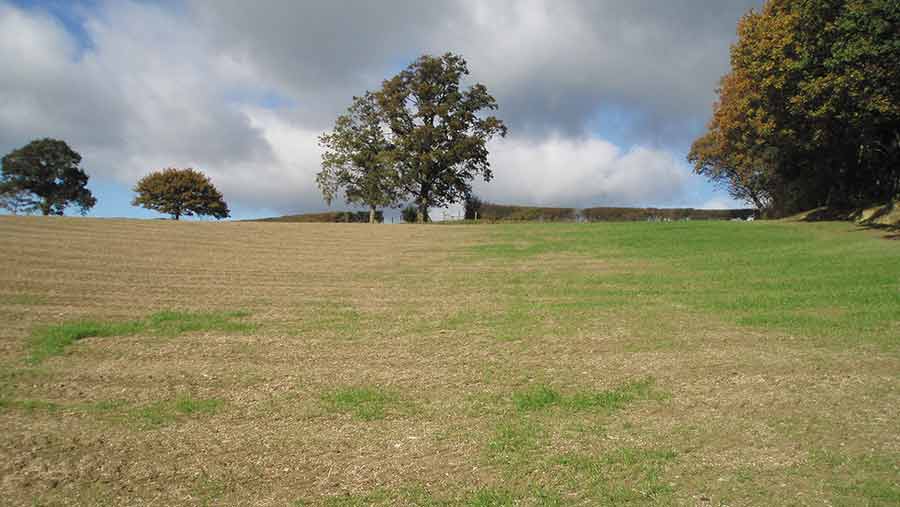Break crops offer pest control after pesticide restriction
 Fritfly damage in a grassland reseed
Fritfly damage in a grassland reseed Sowing breakcrops and cultivating will help protect new grass leys following restrictions placed on a vital grassland insecticide.
From 1 April 2015 the use of all chlorpyrifos-ethyl products, which have previously been used to control pests such as leatherjackets and frit fly (see “The restrictions”) that attack new grass reseeds, cannot be used on grassland.
Despite fears over the effect of the restrictions, grass specialists say the threat can still be minimised through effective cultivation and the strategic use of break crops.
The restrictions
- Chlorpyrifos is an organophosphate insecticide. It is contained in products such as Dursban.
- Following a EU review in 2015, the chemical was deemed a risk to operators, which has led to restrictions on its use.
- The changes meant:
- From 1 April 2016, the only permitted use of chlorpyrifos will be a protected brassica seedling drench treatment applied via an automated gantry sprayer.
- Implicated products with current uses on their label cannot be sold after 31 March 2016 and growers cannot use them after this date either
See also: How to hit protein needs when outwintering ewes on brasiccas
“These pests can devastate new leys if not controlled, but the risks can be avoided through effective cultivations and the use of brassica break crops,” says Helen Mathieu of Germinal.
She says the use of fast-establishing hybrid brassicas or kale have the added benefits of providing an additional source of high-quality grazing and reducing the effect of any forage shortfalls between leys.
This can be timed to provide late summer, autumn or even winter grazing for cattle or sheep.
“Ploughing and cultivating in summer, and sowing a break crop, will disrupt the lifecycle of the crane fly and is known to reduce leatherjacket populations by 50%,” adds Ms Mathieu.
“In a similar way, the risk of frit fly damage can be minimised with the use of break crops, particularly when the period between planting and utilisation is at least two months.”
How pests destroy plants
- Leatherjackets result from the crane fly laying its eggs in late summer. These develop into larvae over the winter months. These larvae (leatherjackets) feed on the roots and stems of plants just below the surface and cause crop damage (loss of yield and large bare patches) from early spring until midsummer, when they pupate.
- The frit fly frequently produces three generations a year, with the larvae of the third generation emerging in late summer. These larvae can cause a great deal of damage to grass leys and cereals when they tunnel into the centre of the plant, causing dead-hearts, before moving to another tiller or plant.
